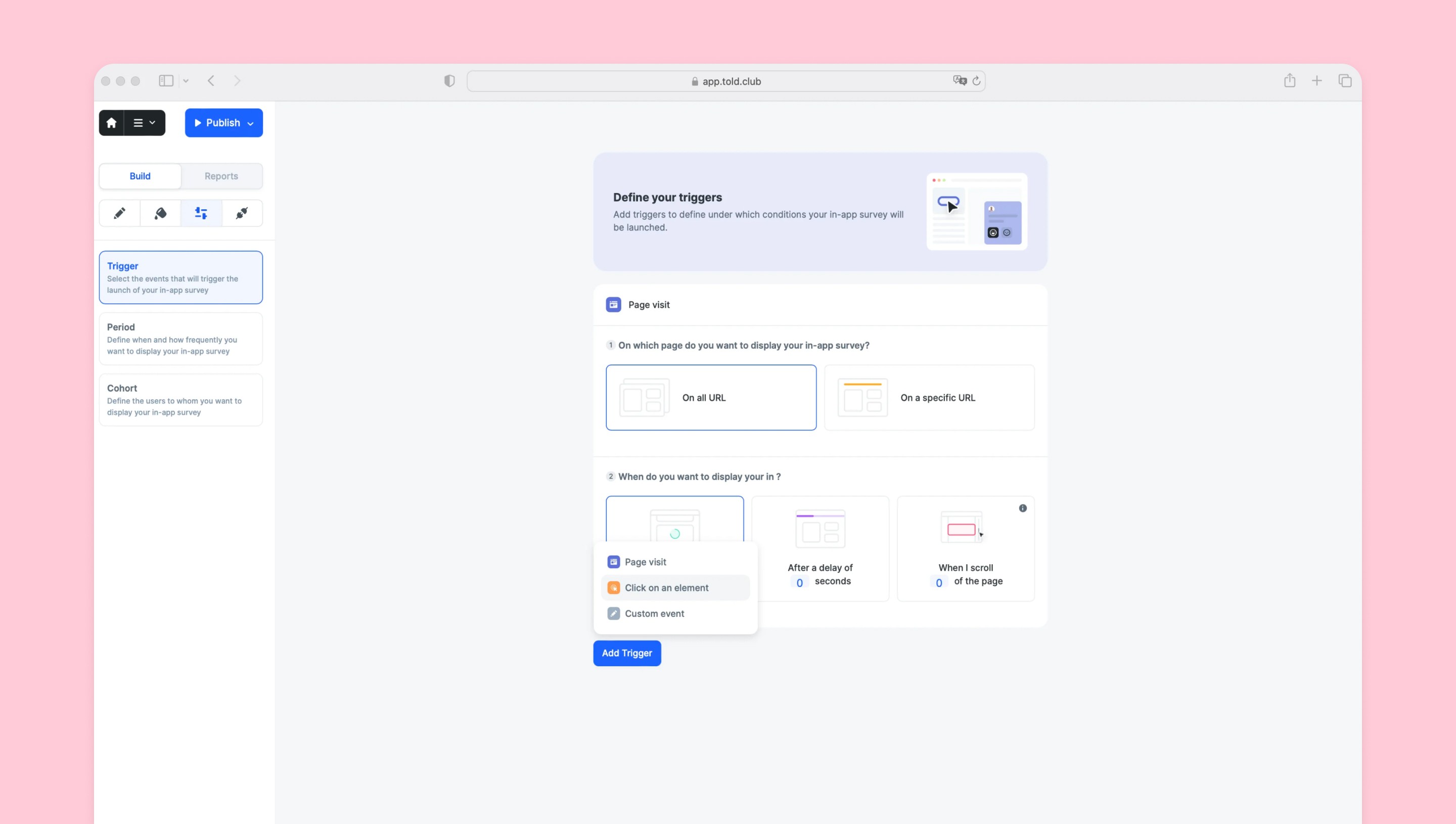In the pursuit of delivering exceptional customer experiences, understanding the effort customers exert when interacting with your brand is paramount. Enter the Customer Effort Score (CES) survey - a powerful tool that gauges the ease of your customers' interactions. In this article we'll help you create a CES popup survey and display it on your website. We'll use told to create this survey, it's easy, you don't need a developer and you can create a free account.
Top companies trust Told to engage her users:
Set up an CES survey today !
Sign up for free
Step 1. Create a popup survey
Before doing so, you need to have created an account and installed told on your website. So we begin this guide by creating our survey and naming it CES. It's not mandatory to rename your surveys, but it will help you to be better organized. With told you can create and display as many surveys as you like on your website, free of charge.
Step 2. Add the follow-up questions
1- CES question
Once you've created your survey, we'll add the first question by clicking on Opinion Scale. And copy and paste the following question:
“How easy was using [Our company/Feature] so far?”.
All you have to do is replace it with the company or function of your choice. You can also add a description to this question, but personally I'm not going to do that. Then I'll change the emojis to numbers and leave 5 steps. I'll also add the following labels: “Quite difficult” close to 0 and “Super easy” close to 5. This will help the user to understand the question better and answer it more effectively.
2- Ask what could be improved
Knowing user effort is great, but knowing what to improve is even better. So let's create a new open-ended question and ask our users the following:
”What do you think could be improved about this feature?”
3- Go further
Here's a list of actions you can implement on told to go even further and improve your survey:
Translate your survey into different languages
Thank your users for taking the survey by activating the Thank you question
Make a connection with Slack for example using webhooks when there's a new response
Keep in mind that this rating is not an end in itself, the aim is to put actions in place to try and improve it.
Step 3. Customize your survey
As you embark on creating your CES survey, one critical aspect that demands attention is customization. Tailoring your survey to align with your brand identity and specific objectives holds tremendous significance for the success of your feedback collection efforts.
At told we've developed features that enable you to create a more personal, designer survey, with higher engagement and response rates. For example, you can:
Change the colors
Change the position of the popup on your website
Add an image/gif
Add an avatar, to make it look more human
Remove the branding told - Remove the close to force people to answer (Attention, this can affect the user experience)

Step 4. Trigger and publish
The last step is to define the triggers, i.e. the action on the site that should trigger the CES popup survey.
In this article, I'm not going to tell you exactly which trigger to use, as it necessarily depends on what you want to evaluate. Be careful not to trigger the survey in the middle of the experience, waiting until the user has completed the action. However, be careful not to trigger it too late, or the responses will be less qualitative - you need to find the right balance!
At Told, for example, we trigger a CES survey at the end of the checkout tunnel on the success page within 2 seconds.
There are 3 types of trigger on told:
Page visit (with or without delay / from a certain % scroll)
Click on a button
Custom event

Conclusion
Throughout this comprehensive guide, we have explored the step-by-step process of creating a CES survey, allowing you to measure customer satisfaction and streamline the customer journey effectively. By leveraging this data, you can identify pain points, reduce friction, and deliver seamless experiences that leave a lasting impression on your customers.
Remember, the true power of the CES survey lies not just in its implementation but in the actions you take based on the insights gathered. Use this data to make data-driven decisions, enhance operational efficiency, and continually evolve your offerings to meet and exceed customer expectations.
Now it's your turn! Create a free account on told to create your NPS survey now.


